Nobody wants to time record, particularly if you work in an in-house corporate Legal Department. Much has been said about the merits (or otherwise) of time recording in law firms, but less has been written about how this does or does not work for in-house legal teams.
Those who time record can find some value in the data captured to inform them about the effectiveness of their resource allocation and (in theory), return on investment. Easier in law firms with the billable hour, more complicated in in-house legal teams. Or so you may have thought.
Legal matter management software by its very nature captures data about the legal work done by a corporate Legal Department. It does not necessitate time recording and at Xakia we have found another way: T-shirt sizes.
Rather than granular and laborious time recording, each legal matter can be given a quick, broad categorization of XS | S | M | L | XL by the in-house legal team working on the matter. Circumstances or scope creep might see this change, and it will not be perfectly accurate, but taken as a broad indicator, this quick snapshot can offer critical legal operations insights.
Across the Xakia client base in the U.S., the average Legal Department counts 40.5% of its legal work in the ‘extra small’ category. This is a pure count of legal matters and does not reflect time spent. In this scenario, an ‘extra small’ matter is counted in the same way an ‘extra-large’ matter is counted.
Let’s consider a world where 40% of the legal work coming to a Legal Department is ‘extra small’. If you weight this work** to give it an indicative time score (assume that it will take less than 1 hour), then the total time contribution of 'extra small’ work falls to a mere 1.6%.
That number makes sense for the legal input to resolving those matters, but consider also the process that sits around this legal work. All this work must be received, triaged, assigned – and then resolved. That is a noisy process for relatively straight forward work and requires constant context switching and suggests that 1.6% under-represents the total time taken to address this work. Ultimately, this contributes to legal team burnout.

The disproportionate noise of the intake process is concerning and in need of attention through a streamlined legal intake and triage process, or by using a legal operations software.
We can expect that generative AI and large language models will fit right into this in-house legal space. Before in-house legal teams can go to that solution, however, they must understand the type of work that sits within this category and streamline the intake process through their matter management solution.
For those not ready for AI – whether funding, privacy, data security or other reasons – there are a myriad of solutions to address this messy, time consuming work process, including formal intake and automated document assembly, both of which can give rise to a zero or low-human touch solution and return team focus to the work that has most impact for their organization.
Geographic differences: APAC and USA account for Xakia’s largest client base*** and offer the most useful geographic comparisons. A discernible difference is evident for ‘extra small’ and ‘medium’ sized matters, where the U.S. deals heavily in smaller work.
To dig into the reasoning behind this, we would need to conduct further analysis on the categories of work that sit within each – a topic for another day! For now, it is interesting to note the differences are not substantive enough to change the end game – productivity improvement lies in process at the bottom end of this legal ladder and can be addressed in a simple, powerful and affordable legal matter management software.
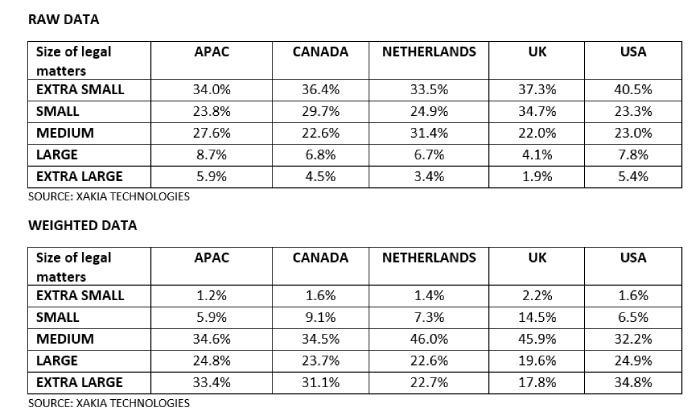
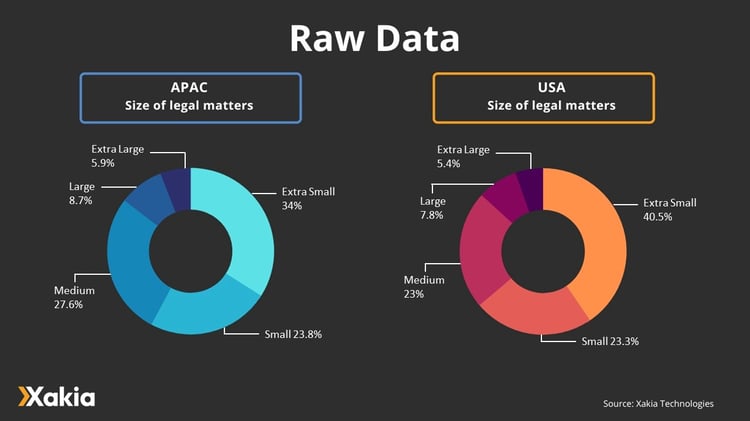
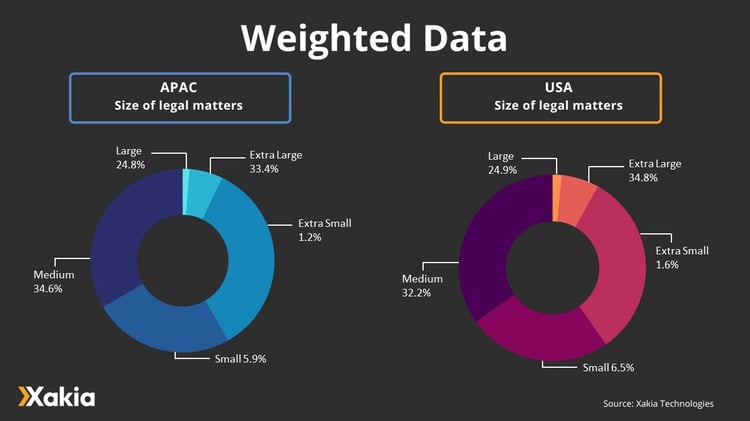
** Methodology for time weighting: Recall that T-shirt sizes are used as a proxy for in-house legal resource allocation – a fancy way of saying “time spent”. This is not trying to be perfect, but to give us a general feel for how resources are being utilized across the in-house Legal Department. In a world where legal team productivity is under the microscope, resource utilization is an increasing focus of legal leadership teams. To that end, Xakia weights legal matters with T-shirt sizes as follows:
Extra small: 1
Small: 7
Medium: 35
Large: 80
Extra Large: 160
This methodology has been successfully used for the past seven years across Xakia’s client base to understand in-house legal resource use and identify opportunities for optimization.
*** Xakia launched in Canada in 2020 and EMEA in 2022.
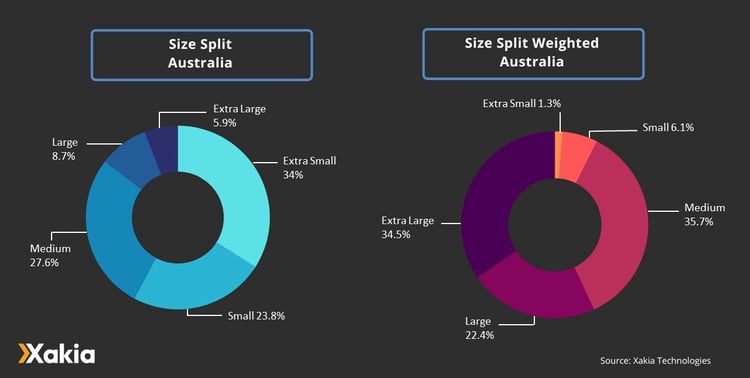
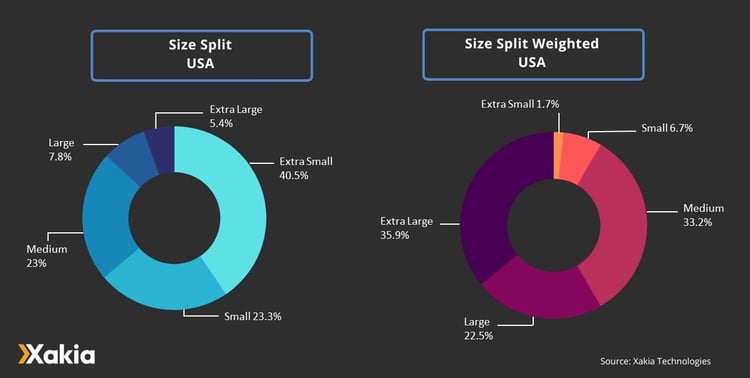
To learn more about Xakia's in house legal department software, get in touch with the team today for a demo, or sign up for a free 14-day trial to see it in action.